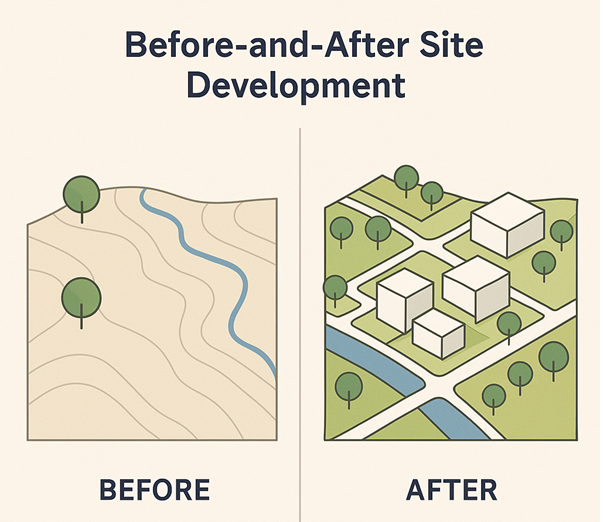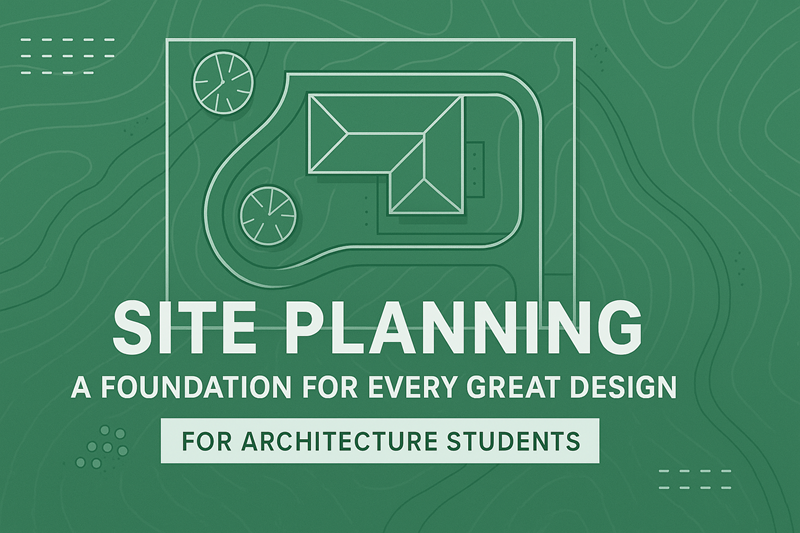Site Planning: An Essential Guide for Architecture Students
P.S: Article updated on 29th March 2025
Site planning is one of the most crucial—yet often underestimated—aspects of architectural design. Before a single brick is laid or a line is drawn on a blueprint, the site must be understood, respected, and shaped. For architecture students, learning how to analyse and plan a site is fundamental. It bridges the gap between theoretical design and practical implementation, grounding creative vision in the real-world complexities of land, nature, and human use.
What is Site Planning?
At its core, site planning is the process of arranging buildings and structures on a piece of land, along with shaping the open spaces between them. It is an art as much as it is a science, blending architectural creativity with urban planning logic. A site plan doesn’t just tell you where things go—it tells a story of space, movement, interaction, and context.
Whether the site involves a single house, a group of buildings, or an entire neighbourhood, a well-thought-out site plan ensures the environment enhances, rather than limits, the design. Good site planning considers environmental, cultural, and infrastructural factors to produce a plan that is contextually appropriate, functional, and aesthetically pleasing.

The Importance of Site Planning in Architecture
For architecture students, understanding site planning is not just a box to tick. It is a foundational skill that will influence every project they work on. It affects:
- Building orientation and solar access
- Integration with the natural landscape
- Accessibility and movement
- Energy efficiency and sustainability
- Quality of life for occupants and users
Ignoring site factors can lead to designs that are uncomfortable, inefficient, or even unbuildable. Conversely, designs that grow organically from the site often feel more harmonious and enduring.
